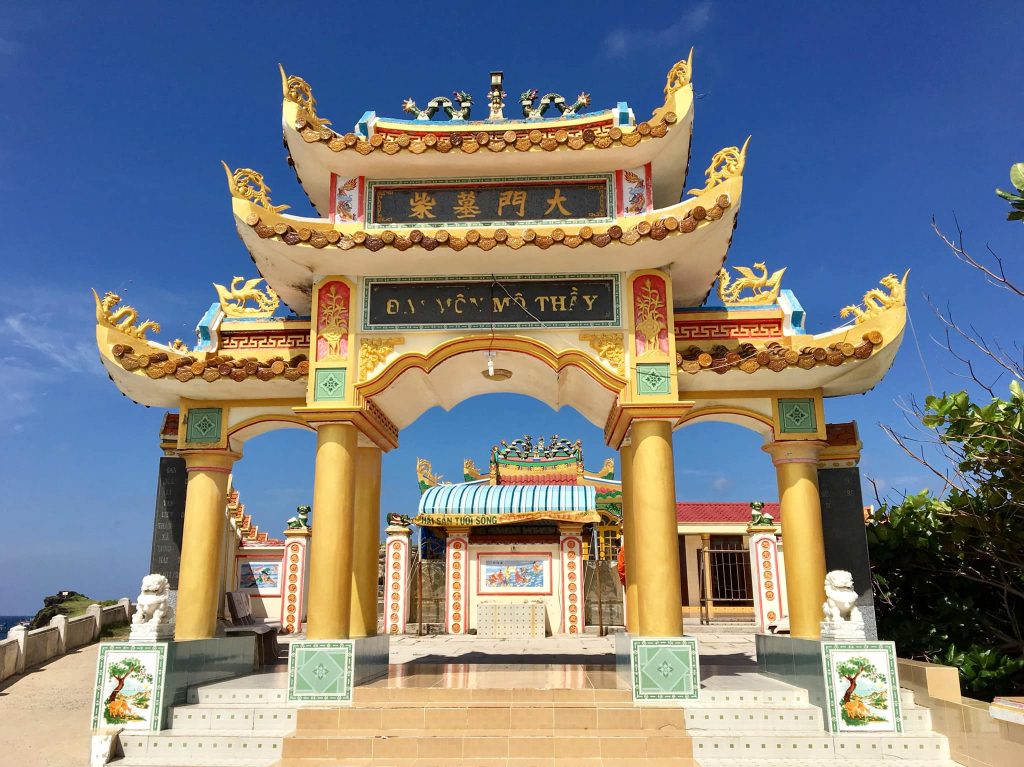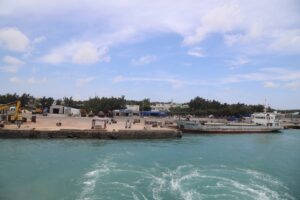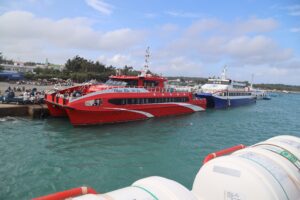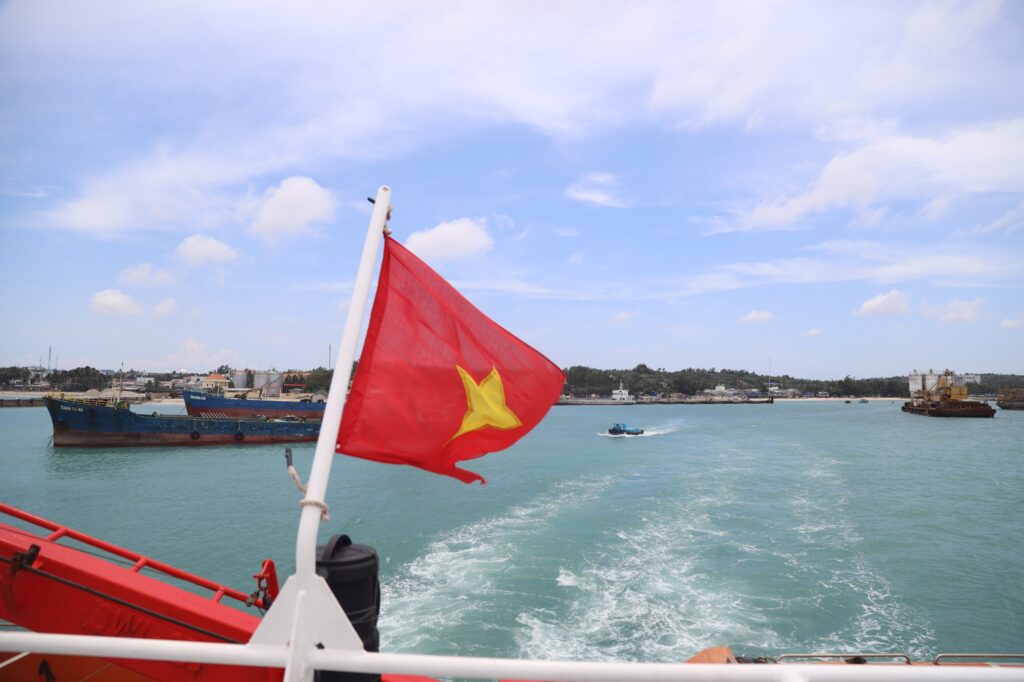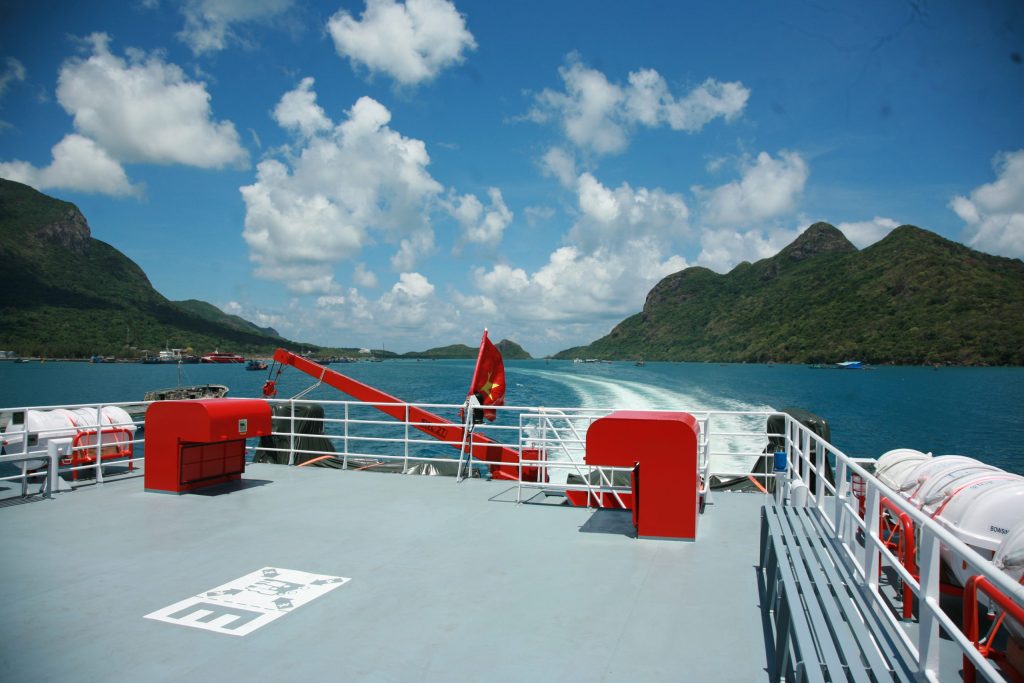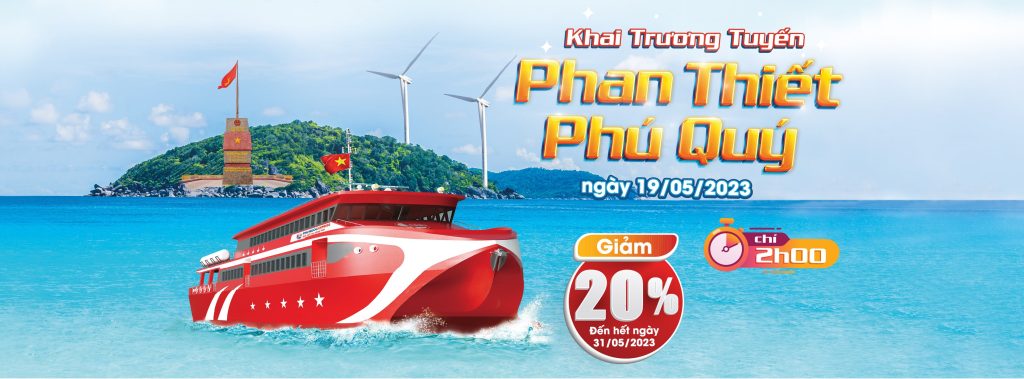Phú Quý Island not only attracts visitors with its blue seas, pristine landscapes, and colorful coral reefs but is also known as a spiritual destination rich in sacred legends surrounding this mysterious island.
Princess Bàn Tranh Temple
For the people of Phú Quý Island, Princess Bàn Tranh is revered as a protective deity of the entire island and its residents. In honor of her great contributions, the locals refer to her as “Bà Chúa Xứ” (Lady of the Land), and the place of worship is called the Princess Bàn Tranh Temple or “Miếu Bà Chúa.” The Nguyễn Dynasty conferred several titles upon her, recognizing her as a High Deity (Thượng đẳng thần).
Legend holds that Princess Bàn Tranh was a Chăm princess exiled to the island for defying the king’s command to marry a foreign prince. Accompanied by attendants and supplies, she and her group reached the island and began building a new life on this uninhabited land. Under her leadership, they cultivated the land, fished, and established the first villages. Upon her death, she was buried at the current temple location. Her divine presence is believed to still protect and bless the islanders.
Worship of Princess Bàn Tranh has become a sacred belief system on the island, with villagers from all three communes (formerly 14, now 9 villages) taking turns annually to host rituals and care for her temple. The temple, located at the foot of Mount Cao Cát, has been renovated several times but still holds its spiritual significance. The main festival held here is on the 3rd day of the lunar New Year, drawing almost all islanders for ceremonies and spring celebrations.
Shrine and Tomb of Master Sài Nại
The shrine and tomb of Master Sài Nại reflect deep humanistic values. Islanders believe that after his passing, Master Sài Nại became a divine being whose presence is marked by three thunderclaps and a radiant light. Many attest to his miraculous help, especially during dangerous sea voyages or wartime hardships.
According to legend, Master Sài Nại was a Chinese merchant in the 16th century. He was also a geographer and healer who saw Phú Quý as a sacred land. He became close to Princess Bàn Tranh and helped the locals with medicine. Upon his death, his ashes were brought back to the island and buried in what is now called Doi Thầy (Master’s Hill). The tomb is made from coastal rocks and shaped cylindrically.
The Vietnamese later built a shrine to him at Ngũ Phụng commune. This site symbolizes cultural exchange between the Vietnamese and Chinese and has been maintained for over 300 years. People especially pray to him for protection in business and safe travels abroad. Worship is rotated annually among the villages, with a handover occurring on the 4th day of the 4th lunar month.
Vạn An Thạnh (An Thạnh Whale Shrine)
This shrine, located in Triều Dương village, Tam Thanh commune, honors the whale (“Ông” or Nam Hải deity), a protector spirit of seafarers. The shrine, built in 1781, is the oldest of its kind on Phú Quý Island and also enshrines village founders and local deities.
In 1841, a whale carcass washed ashore near the shrine. The event was seen as sacred. Islanders held rituals, buried the whale, and later placed its bones in the shrine. It became the first and most revered whale spirit, now known as the “Vị Cố.” The shrine houses an impressive whale skeleton over 17 meters long, with 50 vertebrae and 30 lower-jaw teeth.
Visitors can explore traditional architecture and learn about the whale-worship customs that reflect deep oceanic cultural values passed through generations of islanders.
Trấn Bắc Shrine on Hòn Tranh Islet
Built in the early 19th century, Trấn Bắc Shrine houses two sacred tablets: one for General Bùi Quận Công and one for the goddess Thiên Y A Na. General Bùi was likely Bùi Tá Hán, a respected military figure credited with taming and settling Quảng Nam in the 17th century.
The shrine, located on the northern part of Hòn Tranh Islet, includes a main hall, incense house, gate, and a special whale mausoleum. Inside are 72 whale skeletons believed to have washed ashore at the same time—an event that was commemorated with burial and worship.
The Nguyễn Dynasty awarded three imperial decrees recognizing the general’s spiritual contributions, and rituals are held annually on March 12 (for Thiên Y A Na) and August 7 (for General Bùi). During other major festivals, locals invite the spirit from the islet shrine to join ceremonies at the Vạn An Thạnh shrine.
Linh Quang Pagoda
Located in Tam Thanh commune, about 2 km southeast of Phú Quý town center, Linh Quang Pagoda is the island’s oldest Buddhist temple. It was founded in 1747 by Monk Nguyễn Cánh and began as a modest thatched hut. Over time, it was rebuilt and expanded with support from islanders.
The temple showcases intricate Buddhist architecture, art, and relics, with the name “Linh Quang” symbolizing spiritual light. After a fire destroyed the original structure, a sacred stone miraculously appeared near Hòn Tranh Islet. Locals interpreted it as a divine sign and sculpted it into a statue of Shakyamuni Buddha, which is still worshipped today. The site where the stone emerged is now called “Vũng Phật” (Buddha Pool).
Legends say Emperor Nguyễn Ánh once took refuge on Phú Quý Island and prayed at this pagoda during his flight from the Tây Sơn army. Today, Linh Quang remains a spiritual cornerstone for islanders, offering strength and guidance in their lives and in the defense of their homeland.



